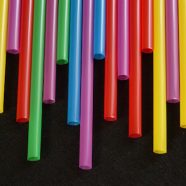
Plastic extrusion turns solid pellets into molten plastic. Extruded plastics make everyday objects such as pipes, cable sheathing, and wire insulation; they can also make more complex objects such as footwear and automotive parts.
Plastic extrusion involves raw materials forced under pressure through a die to create a continuous filament. These polymer filaments often possess improved mechanical characteristics over other processes and provide greater values in terms of strength, thickness, conductivity, or transparency.
They are also commonly used for solar protection and optical windows. The final product has a uniform wall thickness, good mechanical strength, and excellent consistency among batches. High-strength polymers are excellent for one-piece extrusions, such as a boat hull or car roof , or even reinforcing fillers in advanced plastic materials.
Polymer products can also be recycled, which allows them to be used in flexible packaging instead of traditional plastics such as polyethylene. They are also perfect for injection molding, extrusion forming, and blow molding.
Types of Plastic Used in Extrusion
Here are the plastics used according to extrusion type:
Flexible Extrusion
Flexible plastics manufacturing products are expected to have some flexibility, the most common being vinyl.
This type of plastic is also known as extruded rubber, and it’s manufactured by mixing additives and fillers into compounds that often include polymers. The plastic properties created in this process then harden upon exiting the die head during extrusion.
Rigid Extrusion
Rigid plastics produce items that must withstand significant pressure and are often subjected to heavy stress. Some common applications include manufacturing toys, small household appliances, storage bags, and disposable cutlery.
Rigid plastics can also be used for industrial purposes, such as mechanical parts and automotive components. These plastic properties can withstand high pressure because the polymer chains are connected in a straight line, making the result much stronger than flexible plastics.
Sheet Extrusion
The plastic extruder can manufacture plastic, sheets, and products such as plastic packaging film and shopping bags.
The extruded plastics are fed through a die with a gradually increasing pressure and temperature until it emerges from the exit point as a continuous, uniform, and extruded product. These polymers are very easy to recycle due to their biodegradable nature.
Tubing Extrusion
This type of plastic is often used to create long, molded plastic profiles with round cross-sections. The goods are produced by plastic extruder through a die head that is also designed for hollows After exiting the die head, the product is cooled and cut off for further processing into various components or packaging.
Overjacketing Extrusion
These types of plastic are used to manufacture parts that are made to fit over another component. This process involves extruding polymers through a die head and then drawing the product through an overjacketing die that coats in one direction.
The extruded plastics will have a smooth outer surface with an inside network of holes, allowing the part to be fitted over other components.
Coextrusion
This is formed when two or more polymers with different properties are extruded through a single, multi layer die head. The final products have multiple layers of material, and the final product highly depends on the coextrusion process and materials used to produce it.
Benefits of Plastics Extrusion
Here are the numerous benefits of plastic extrusion:
Cost-effectiveness
Plastic manufacturing equipment is highly efficient and cost-effective. Plastic manufacturing is a great option if a company wants to maintain a low overhead. It will also allow you to control important factors such as the material used and production speed.
Increased Automation
Extruded plastics have become increasingly automated, allowing companies to operate with fewer employees and at a higher capacity. With plastic extrusion, companies can increase productivity quite easily.
Versatility
Plastic materials are known for their versatility, and this is one of their most important selling points. Industries such as the automotive and electronics industries cannot function without plastics materials because they are light, durable, flexible, and conductive materials.
For example, many car interiors contain a large amount of plastic to ensure that the car has a sleek look while providing occupants with comfort and safety.
Recycling
Plastic materials are one of the most recycled materials in the world, and it’s important to understand why. In some cases, plastic products are made from recycled materials, reducing pollution and their contribution to landfills.
Process of Plastic Extrusion
The process begins with polymer pellets heated up at high pressure and then fed into a barrel which sends them through a screw extruder. The plastic pellets are then melted and forced through a die at high temperatures.
The material becomes molten, cooled, and sent through a fluted die to provide the necessary shape and consistency. Afterward, the plastic materials are cooled and cut down to size. The custom extrusions create long profiles of plastic cooled by water and eventually combined to form the desired product.
Plastic extrusion is a very efficient process that ensures high-quality products at an affordable price. Plastic manufacturing equipment is easy to install & maintain and can be used to make parts for many diverse industries, including automotive, household furniture, electronics, and food packaging.
These extruded plastics are extremely durable and are a great choice for those who want the latest technology in plastics. See our processes for plastic extrusion and more today.




